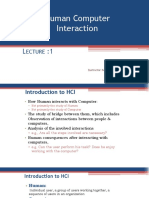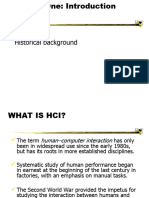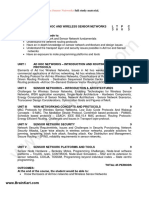0% found this document useful (0 votes)
13 views50 pagesIntroduction To Hci
The document outlines an introductory course on Human-Computer Interaction (HCI), detailing its definition, objectives, historical evolution, and multidisciplinary nature. It emphasizes the importance of designing user-friendly interfaces and understanding human behavior, psychology, and ergonomics in the context of technology interaction. The course aims to equip students with knowledge on interactive systems, input/output channels, and the challenges in the field of HCI.
Uploaded by
harshankumarpottiCopyright
© © All Rights Reserved
We take content rights seriously. If you suspect this is your content, claim it here.
Available Formats
Download as PDF, TXT or read online on Scribd
0% found this document useful (0 votes)
13 views50 pagesIntroduction To Hci
The document outlines an introductory course on Human-Computer Interaction (HCI), detailing its definition, objectives, historical evolution, and multidisciplinary nature. It emphasizes the importance of designing user-friendly interfaces and understanding human behavior, psychology, and ergonomics in the context of technology interaction. The course aims to equip students with knowledge on interactive systems, input/output channels, and the challenges in the field of HCI.
Uploaded by
harshankumarpottiCopyright
© © All Rights Reserved
We take content rights seriously. If you suspect this is your content, claim it here.
Available Formats
Download as PDF, TXT or read online on Scribd
/ 50






























































































